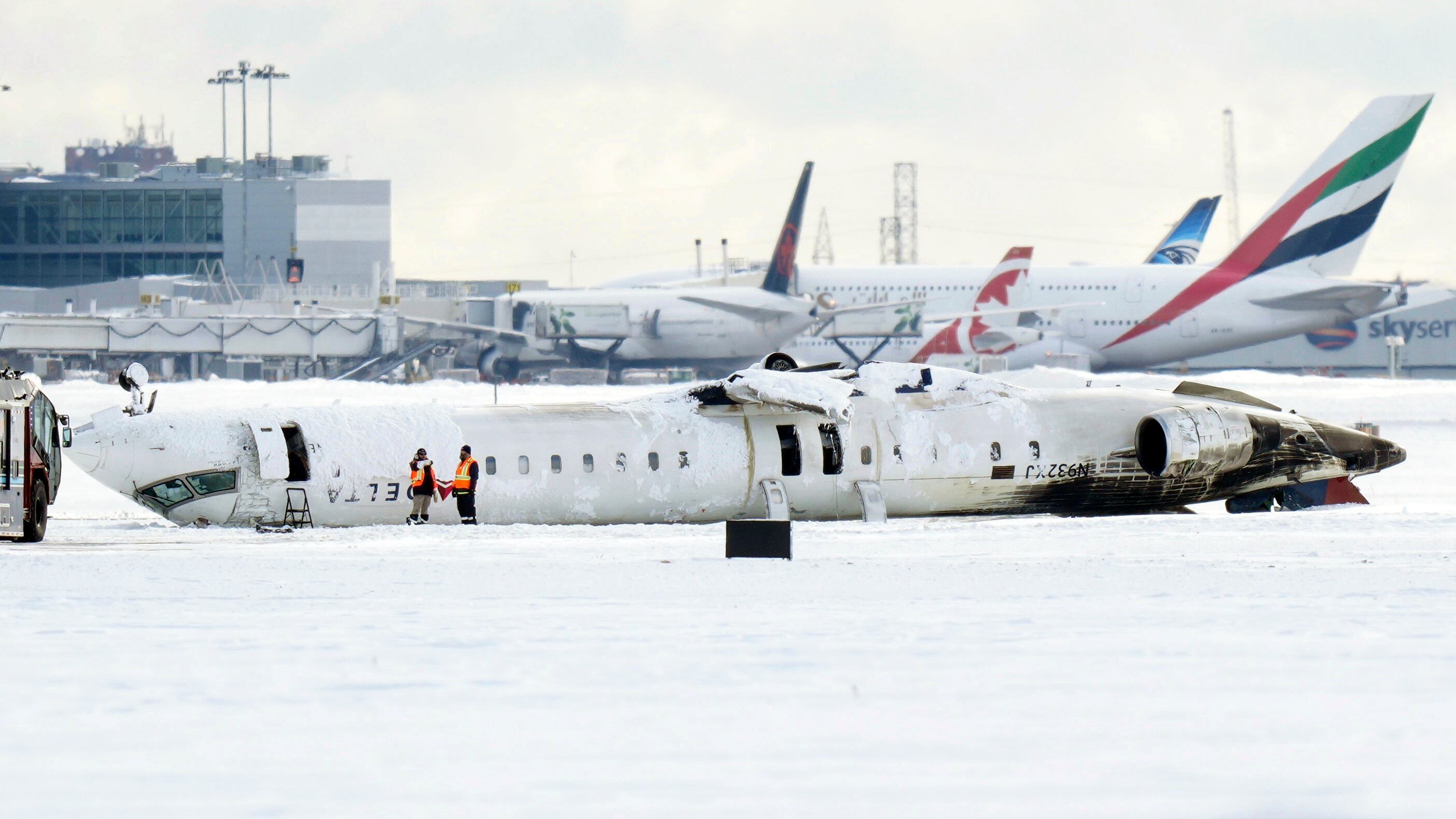The plane crash of Delta Air Lines that occurred while landing at Pearson Airport in Toronto on February 17th has been thoroughly analyzed by the Transportation Safety Board of Canada (TSB). According to initial findings, the plane descended at an excessive speed.
PUBLICIDAD
This was due to strong gusts of wind caused by an intense snowstorm, which led to the collapse of the landing gear and the subsequent overturning of the aircraft. The TSB’s preliminary report reveals that the aircraft’s ground proximity warning system activated just 2.6 seconds before landing, indicating a high rate of descent.
PUBLICIDAD
More details revealed about Delta Airlines accident in Toronto
In those seconds before landing, the speed of the aircraft was approximately 149 knots (276 km/h), a figure higher than the recommended for a safe landing under those conditions. The right main landing gear of the plane collapsed upon impact with the runway, triggering a sequence of critical events.
The fracture of the landing gear’s lateral support caused it to collapse, resulting in severe damage to the root of the right wing, which eventually detached from the fuselage. This released a cloud of fuel that ignited, adding even more drama to the incident.
Despite the seriousness of the accident, all 76 passengers and the four crew members managed to survive. However, 21 people were hospitalized with various injuries. The shocking images of the overturned plane, covered in snow and with the right wing missing, made a strong impression on the public and highlighted the seriousness of what had happened.
The authorities will continue investigating the Delta accident until they know every detail
The investigation continues and focuses on analyzing in detail the fracture surfaces of the plane, as well as the landing maneuvers and crew training. It has been confirmed that the pilot in command had over 3,500 flight hours, while the first officer had 1,422 hours of experience.
Ed Bastian, CEO of Delta, praised the crew’s work after the accident and emphasized that they were prepared to handle emergency situations. “We continuously prepare for this,” Bastian stated in an interview following the incident.
